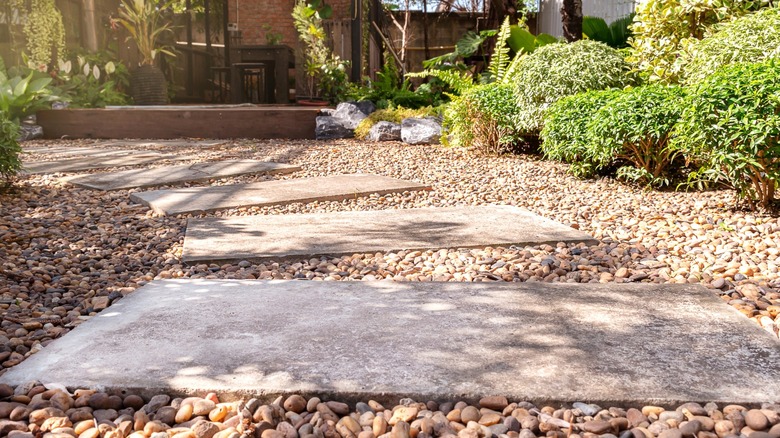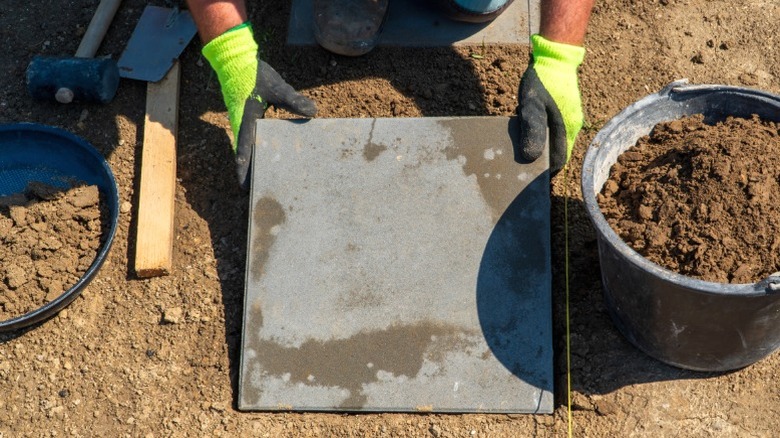Follow This Rule To Get Perfectly Spaced Stepping Stones Every Time
Laying stepping stones is relatively easy for most DIYers, but planning your layout can be more challenging than you might anticipate. While it may seem straightforward enough to toss down stones and beautify them with even spacing, aesthetics are only half the concern. Stepping stones should be practical for those who use them. No matter how good it looks, a pathway can lose its appeal if you can't move comfortably from one surface to the next at your desired pace. Before you set your design and figure out how many pavers you need for your walkway, you have to decide on the most sensible spacing.
One of the best methods for spacing your pavers is to test it with different members of the household. Lay two to three pavers in a row and practice walking over them with a natural gait. Test configurations several times to see whether they're too close or too far apart. Mark where your foot lands to help adjust as you find the correct spacing. Consider your walking speed as well, which may depend on the context. Creating a garden path fit for a slow stroll, for instance, will need closer paver spacing than a utilitarian path connecting the front of the house to the back. If you ever expect to wheel carts or move heavy equipment over it, you may want your path to have no more than an inch between the pavers. Otherwise, you can dial in the final layout with an easy-to-follow rule.
A simple rule for the best stepping stone spacing possible
Testing your stepping stone spacing with different family members is a great way to find the best fit for those who will use your new pathway the most. But what if you frequently host guests or simply don't have the time to test the arrangement? In these instances, you can lean on a one-size-fits-all approach to determine a fashionable and practical layout. An average person's stride is roughly 2 to 2 ½ feet, so arranging your pavers to be around 24 inches on center will generally work for most who use the path. Once you determine your spacing, cut a couple of spacers to match the desired paver spacing. You can also use these to evenly separate the pavers from the installation's edging and one another as you lay them. The 2-by-4 method takes a similar approach by using the 4-inch side of the board as a spacing guide.
After figuring out the spacing, you'll want to focus on proper installation to maintain a comfortable walking experience. It's easy to oversimplify the process and make mistakes when laying pavers. Over time (and often sooner than you'd like), shifting pavers will make your walkway unattractive and awkward to use. Steps like laying weed cloth, adding and compacting gravel substrate, and installing edging where appropriate are essential, saving you from twisted ankles and future repairs. With planning and execution, you'll have the perfectly arranged paver pathway personalized to you and your family.

